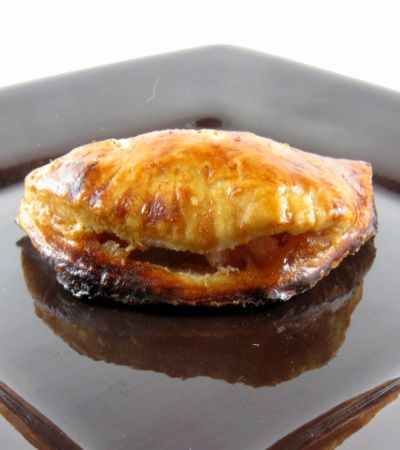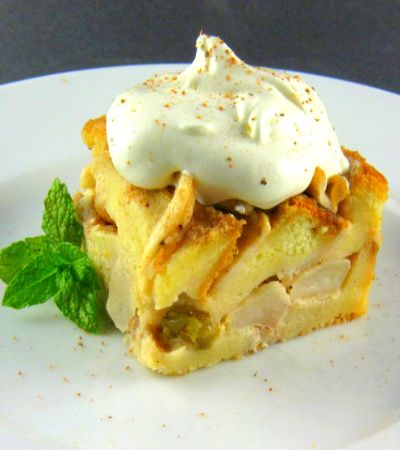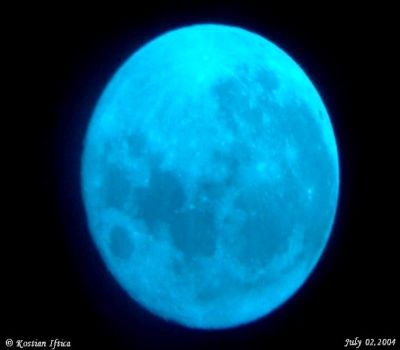
We're talking about moons today - real, imagined or edible. Be sure to see the blue moon following the recipes. The first recipe is for a half moon fruit pie and it's wonderful for picnics, tailgating or events that require you to tote your food. I use apples to make these, but peaches, pears or berries could also be used. This is an easy, straight forward recipe. No special skills or equipment is required. I opt to use Golden Delicious apples in nearly all recipes that call for apples. Feel free to substitute your favorite, but make sure to use one that keeps it shape as it cooks. I dice the apples because I find them easier to work with than slices. If you prefer slices, go for it. This recipe will make sixteen 4-inch or eight 6-inch hand pies. You can make your own pastry or use ready made pie crust or puff pastry. You will, however, need enough pastry for a two crust pie. If you don't want to bake off all the pies, they can be frozen and used as your fancy strikes. Let's get to it.
Half Moon Apple Pies
Ingredients:
Pastry for a two crust pie
1/3 cup granulated sugar
1/3 cup light or golden brown sugar
2 tablespoons cornstarch
1 teaspoon ground cinnamon
1/8 teaspoon nutmeg
1/8 teaspoon salt
4 large apples, peeled, cored and diced
2 teaspoons lemon juice
Glaze: 3 egg yolks + 3 teaspoons milk
Directions:
1) Preheat oven to 425 degrees F. Grease and flour a large baking sheet. Set aside.
2) Combine both sugars, cornstarch, cinnamon, nutmeg and salt in a small saucepan. Add apples and lemon juice; toss to coat. Bring to a boil over medium heat, stirring constantly. Reduce heat; simmer, uncovered, for 4 to 5 or until apples are tender, stirring often. Remove from the heat.
3) Divide pastry into two sections. Roll each as for a 9-inch pie. Using a 4 or 6-inch round cutter, cut dough into 4 or 6-inch circles. Using a tablespoon if for 4-inch pies or a 1/4 cup measure for 6-inch pies, spoon filling into center of circle. Moisten edges with water, fold in half and crimp with tines of a fork. Place on prepared baking sheet. In a small bowl, beat egg yolks with milk. Generously brush half moons with glaze.
4) Bake on center rack of oven for 20 to 25 minutes, or until deep golden brown. These are best if served warm. Yield: 8 to 16 servings.

Bread pudding really lends itself to improvisation. This recipe is simple family fare. We have fancier versions to share with you as the holidays approach, but this is perfect everyday fare. I use Golden Delicious apples and any stale bread I happen to have in the house. This pudding was made with Texas toast. We, of course, serve it with a drizzle of caramel syrup and a dollop of cream or scoop of ice cream.
Harvest Moon Apple Pudding
Ingredients:
8 slices bread, crusts removed
4 Golden Delicious apples
1/2 cup golden raisins
1-1/3 cup milk
5 large eggs
3/4 cup brown sugar
1/4 cup (1/2 stick) butter, melted
1 teaspoon cinnamon
1/2 teaspoon nutmeg
1/4 teaspoon salt
Directions:
1) Heat oven to 350 degrees F. Lightly grease an 11-3/4 x 7-1/2-inch baking dish. Toast bread slices lightly and cut diagonally into quarters. Arrange a single layer of bread pieces in bottom of dish.
2) Core and slice 1 apple; reserve. Core and dice remaining apples. Spread diced apples evenly over bread in dish; sprinkle raisins on top. Arrange remaining bread in two lengthwise rows over diced apples and raisins. Place reserved apple sliced between rows of bread.
3) In large bowl, combine milk, eggs, 1/2 cup brown sugar, butter, cinnamon, nutmeg, and salt; beat until well combined. Pour over bread and fruit; sprinkle top with remaining brown sugar and bake 40 to 45 minutes or until firm. Serve warm or cold.
Yield: 10 servings.
 Photo by Kostian Iftica, courtesy of NASA, taken on July 2, 2004.
Photo by Kostian Iftica, courtesy of NASA, taken on July 2, 2004.
In popular parlance, attributing something to a blue moon moon means that it seldom or rarely occurs. The moon shown in the photo above is blue because the photographer shot the image through a blue filter. Nonetheless, it was a blue moon and it is rare.
What is a blue moon? There are two definitions. The most recent says that a blue moon is the second full moon in a calendar month. This can occur every 2-1/2 years on average. The other, older, definition says a blue moon is the third moon in a season that has 4 full moons. This last definition is important to the ecclesiastical calendar, which needs to know when the 13th moon is going to occur in order to stay on track and determine such things as the date of Easter and Passover.
Are blue moons ever really blue? Probably not. The date of a full moon, all by itself, doesn't affect the moon's color, but volcanic activity can. Back in 1883 when the volcano Krakatoa exploded, the moon appeared to turn blue and stayed that way for years after the eruption. The particles in the ash cloud scattered particles in the visible light spectrum and allowed others to pass through, causing some objects to appear blue or green. More recently the eruptions of Mt. St. Helens and Mount Pinatubo have turned the moon blue as well. The key to having a blue moon is having lots of particles in the air that are slightly wider than the wavelength of red light. Volcanoes and forest fires can cause clouds that do that, so they can appear to be blue even if they're not. I don't want to get involved in the green cheese thing, so I'm going to move on. Hungry?
This post is being linked to Smiling Sally - Blue Monday
No comments:
Post a Comment